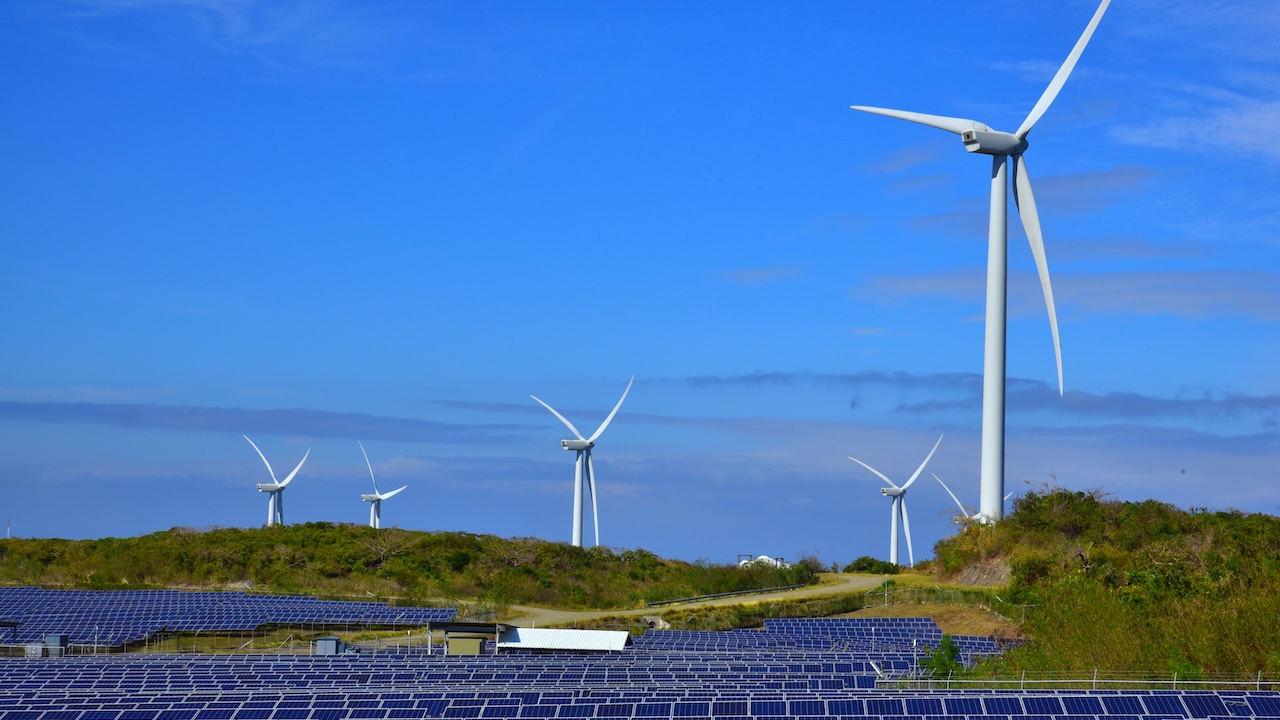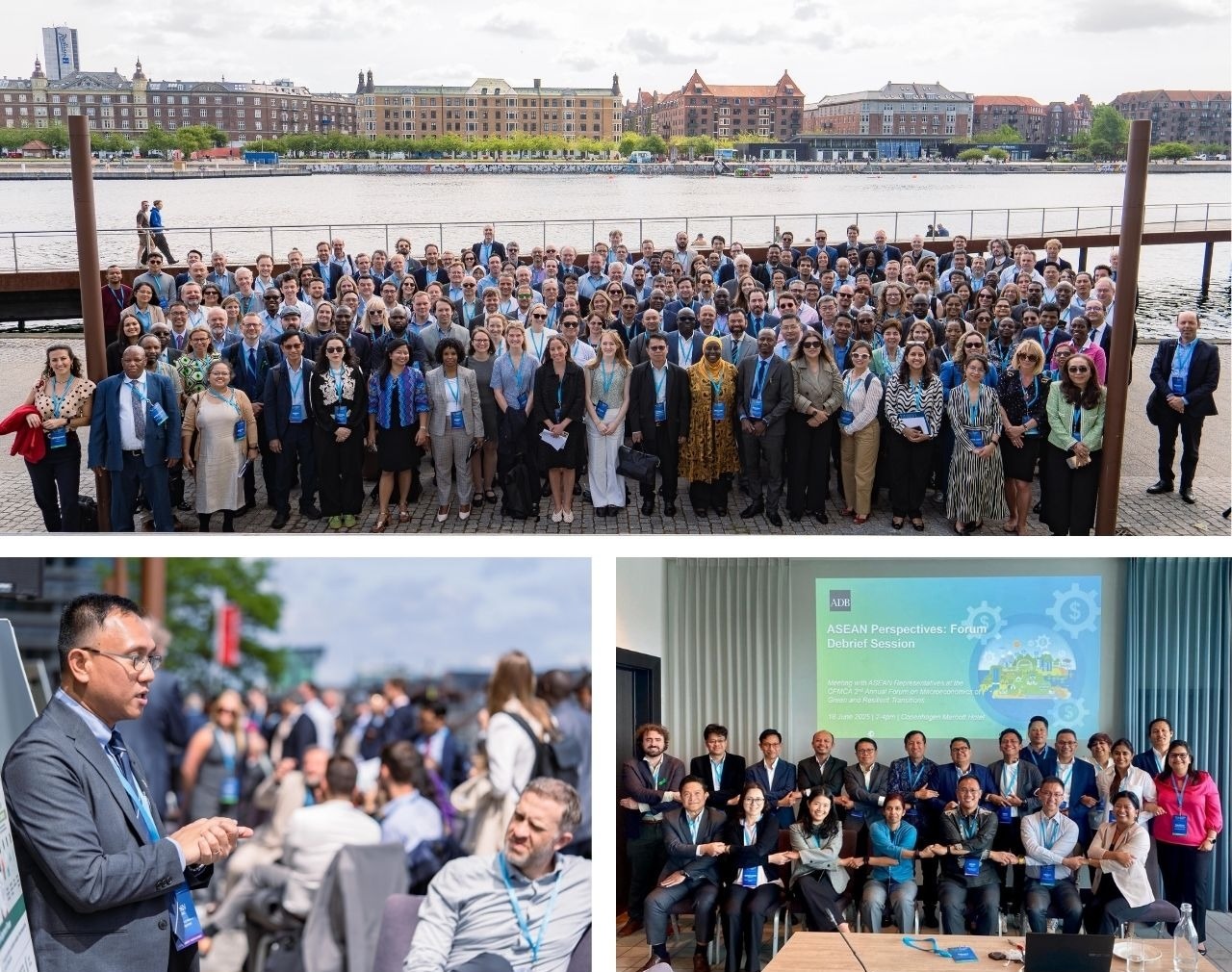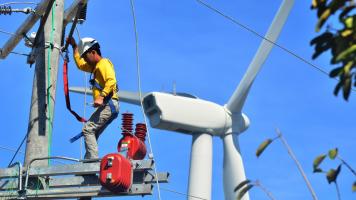
The Independent High-Level Expert Group on Climate Finance estimates that $6.3 trillion–$6.7 trillion in global investment is required annually by 2030 to deliver the Paris Agreement. Photo credit: ADB.
With enhanced tools, inter-agency coordination, and capacity building, finance ministries can significantly accelerate the development of climate-resilient fiscal systems.
The economic imperative for climate action in Asia and the Pacific is undeniable and urgent. Between 2000 and 2022, the region accounted for over half of global average annual losses from climate-related multi-hazards, with recorded damages soaring from $233 billion to a staggering $1.5 trillion.
Looking ahead, the cost of inaction is even more dire. By 2023, the International Institute for Applied Systems and Analysis estimates that climate inaction could shave 1.6% to 2.1% off the GDP of Cambodia, Indonesia, and Thailand from air pollution alone. These alarming figures underscore the critical need for climate-resilient fiscal strategies and inter-agency cooperation to mitigate economic vulnerabilities.
The first step is understanding the impact of climate risk on economic and fiscal systems. Climate risks can harm financial health in several ways, including infrastructure damage, supply chain disruptions, reduced agricultural output, and increased public health costs, as highlighted in the ADB report, Climate-Resilient Fiscal Management: Experience from Southeast Asia.
Despite significant challenges, many Southeast Asian countries are already leading efforts to integrate climate considerations into fiscal and economic planning. For instance, in 2025, the Department of Finance of the Philippines undertook a Public Expenditure and Financial Accountability (PEFA) assessment, with a focus on climate and disaster resilience, a critical step toward understanding the responsiveness and resilience of fiscal policies. Similarly, Thailand’s Fiscal Policy Office has recently integrated the impact of flooding into annual fiscal risk reporting. With enhanced tools, inter-agency coordination, and capacity building, Southeast Asian finance ministries can significantly accelerate the development of climate-resilient fiscal systems.
Achieving robust, green, climate-adaptive, and inclusive national growth hinges on three core ingredients.
1. Coordinating across agencies for better data
A salient issue in addressing climate impacts effectively is the lack of comprehensive and accessible data. Identifying crucial data points for climate-macro analysis and advocating for accessible, open-source data are paramount to ensure informed decision-making.
To understand how climate change impacts a country’s GDP, government agencies must collaborate to provide the necessary data for climate macro-analysis. Data is crucial for scenario analysis, which links climate vulnerabilities to domestic policy priorities. For example, understanding the energy transition demands historical data on energy, weather patterns, and price elasticities. This vital data often resides across various ministries (energy, infrastructure), climate authorities, statistics offices, and meteorological services. Inter-governmental collaboration is therefore essential for sharing this information and making informed fiscal decisions.
Some ASEAN member states are already leading the way in inter-agency collaboration. Singapore’s Inter-Ministerial Committee on Climate Change coordinates whole-of-government climate policies with working groups focusing on areas like carbon and energy transition. Similarly, Malaysia's Joint Committee on Climate Change provides a strong regulator–industry platform. These examples highlight a growing regional commitment to addressing climate impacts through strategic institutional frameworks.
2. Robust Analytical Ecosystems
Effective climate action for finance ministries relies on comprehensive ecosystems comprising models, tools, data, and robust institutions to assess both physical and transition climate risks. Improving this analytical capacity begins with strengthening institutional collaboration with agencies and institutions that possess tools and macroeconomic modelling capabilities.
The good news is that tools and frameworks are already available. Partnering with national planning agencies is a powerful way to develop robust analytical ecosystems for climate change. These agencies can integrate diverse data and policy considerations that individual ministries need. To draw on an example from India, the National Institution for Transforming India (NITI Aayog) manages platforms like the India Climate & Energy Dashboard, a one-stop data platform with information on the country’s energy, climate, and economic sectors that can support informed policymaking. In 2023, NITI Aayog produced an open-source tool called the India Energy Security Scenarios 2047 (IESS 2047), which provides options for developing different future scenarios based on various assumptions of GDP growth, share of industry, energy efficiency due to technology, etc.
Engaging with universities is another strategy for building strong analytical ecosystems for climate action. For example, Indonesia’s Ministry of Finance funded a research collaboration with the Nanyang Technological University of Singapore called the INSPIRASI (Indonesia–NTU Singapore Institute of Research for Sustainability and Innovation), focusing on translating climate-related research into tangible applications in industries and small and medium-sized enterprises. Universities are uniquely positioned to aggregate disparate data from various sources, visualize complex interdependencies, and provide a holistic perspective for climate-informed decision-making.
3. Stronger, better capacitated ministries of finance
The path forward requires a renewed commitment to inter-agency and international collaboration as well as capacity building. Finance ministries play a critical role in spearheading national efforts to build technical and institutional capacity for investment planning. To deliver the Paris Agreement, the Independent High-Level Expert Group on Climate Finance (IHLEG) estimates that $6.3 trillion–$6.7 trillion in global investment is required annually by 2030. Of this, $2.3 trillion–$2.5 trillion is needed every year by 2030 (rising to $3.1 trillion–$3.5 trillion by 2035) for emerging markets and developing economies excluding the People’s Republic of China.
By fostering greater coordination with climate agencies, sector ministries, and the analytical community, and by leveraging platforms like the ASEAN Climate Finance Policy Platform and the Coalition for Finance Ministers for Climate Action, nations can enhance data consolidation, standardize approaches, and accelerate evidence-based policymaking to build resilient and green economies.
Embracing these macroeconomic imperatives is vital for mitigating climate risks. By building analytical rigor, fostering cross-government collaboration, and exercising bold leadership, finance ministries can transform climate challenges into new opportunities for green, resilient, and inclusive growth. More importantly, finance ministries can develop clear pathways to translate analytical insights into concrete fiscal, tax, and investment policies.
This post is based on insights from the Second Annual Forum on Macroeconomics of Green and Resilient Transitions, organized by the Ministry of Finance, Denmark, and the Bezos Earth Fund, under the Coalition for Finance Ministers for Climate Action on 16-18 June 2025 in Copenhagen, Denmark. Representatives from ministries of finance in Southeast Asia (Cambodia, Indonesia, Lao PDR, Malaysia, the Philippines, Thailand, and Timor Leste) participated with support from ADB.



